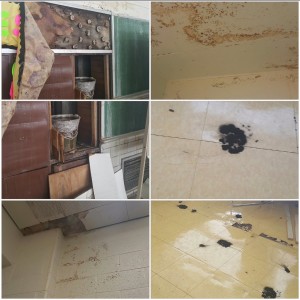For my final post, I decided I wanted to look at the public schools directly in the city of Pittsburgh which is where I’m from. I lived in a suburb right outside of the city where I attended a school with a graduation rate of 98% which is not the same whenever you go to some of the schools in the heart of the city.
A program that I have heard mentioned in the years that I permanently lived there was The Pittsburgh Promise. I never fully knew what the goal of this program was, but I knew it benefitted students in the inner city schools. I decided it would be appropriate to investigate this program and its effectiveness for my final blog about this issue.
When visiting their website, I quickly discovered that their main goals are to “send all eligible urban youth to college or trade school with a scholarship, promote the reform of urban schools so that our young people are prepared for successful and meaningful lives, invest in [the] region’s workforce by preparing the next generation of workers, and raising $250 million to get this work done.” All positive actions to take in order to send more inner city students to receive a higher education and put them on the right path towards a successful future.
However, another thing I constantly heard remarks about in Pittsburgh were the flaws regarding The Pittsburgh Promise, so I then decided to figure out what those actually are. Basically, in 2006, The Pittsburgh Promise received its first donation of $10,000 a month after announcing its launch. A year later, UPMC donated $100 million and another $150 million over the time span of 10 years from different donors. The program then found itself with a lot of money that they could most definitely use to send hundreds of inner city students to college.
They first started to implement the program with the class of 2008, offering them up to $20,000 over 5 years to continue their education following high school depending on GPA, attendance and city residency. By the class of 2012, the maximum scholarship was increased to $40,000 with which students could receive up to $10,000 a year with. This is where the program got ahead of itself. For years, they added benefits to the lives of inner city students, but as the program continues to fund these students’ educations, they are beginning to reduce these benefits.
The program then admitted that if they kept providing the same benefits to students they would only be able to help students up to the graduating class of 2022. They have made changes in hopes to be capable of helping students up to the class of 2028 and are continuing to raise the full $250 million, for they still have $73.4 million to raise which they expect to eventually reach.
The goals of The Pittsburgh Promise are reasonable, and they worked to raise enough money to truly help hundreds of students move on past a high school education. However, the problem they ran into was poor management and distribution of money. I truly think they were giving these students too much money for the amount they had. They should have done more calculations to ensure the money would last them longer than it has.
I am by no means stating that The Pittsburgh Promise is not effective. I just believe since it is run at such a local level it is hard to run it properly to the point that it will continue to benefit students for many years to come. I do think that the changes they are making, and the money they still plan to raise are a good start to making the program last longer.
It is smart to start making changes at the local level. This allows people to see where their money is being donated to which makes people more inclined to donate in the first place. These are the kind of programs that the federal government should look into funding if they want to see substantial amount of changes in the schools where there are currently problems. There is still much more the federal government would have to do on their own, but I believe it would be a good use of their money and budget. It would also help these programs stay afloat, for local programs often end up struggling financially after a period of time.
Overall, I think the implementation of The Pittsburgh Promise was successful. Like many other locally run programs, it has just struggled to continue to benefit those it is supposed to help, but with more recognition from the federal government, it could change this.
Do you think that fixing inner city schools is an objective the federal government should work harder to fix? Do you think starting at the local level is the true way to find a solution to the problem? How could we implement these kinds of programs successfully in other major cities across the US?






Recent Comments